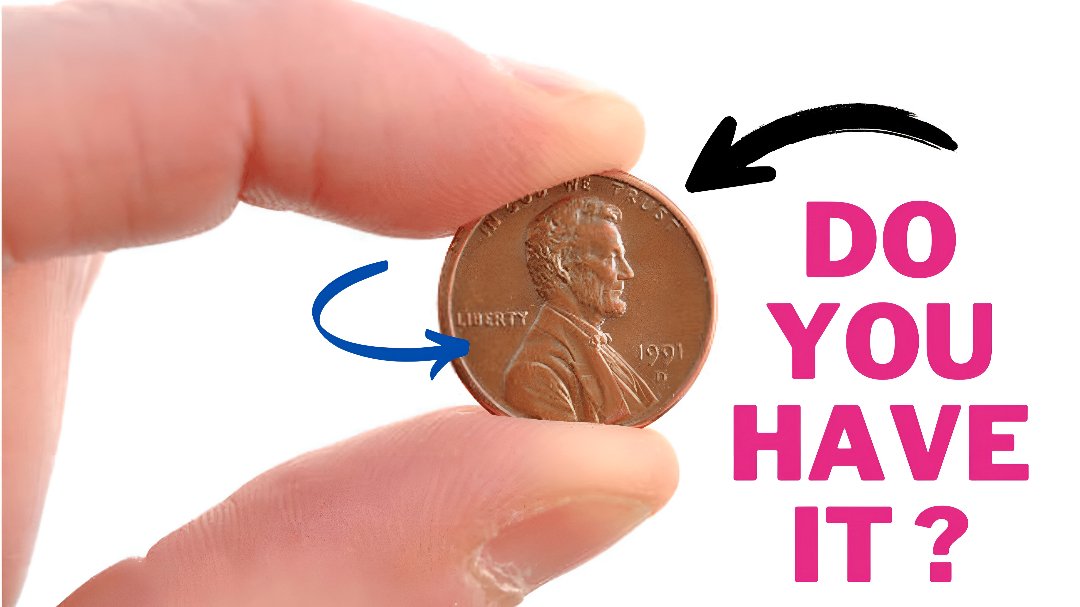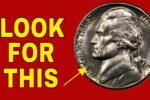Rare Bicentennial Quarter :Imagine this: you’re going through your spare change after a quick coffee run and notice a quarter that looks slightly different. It’s nothing fancy at first glance—just another coin in a sea of jingling metal. But wait, this one has the dates “1776–1976” on it and a drummer boy on the reverse. Could it be? What if that simple coin you almost overlooked is actually worth more than your car—or your house?
It might sound like a fantasy, but there’s a real-life story circulating in the numismatic world about a Rare Bicentennial Quarter that’s supposedly valued at an astonishing $11 million. Yes, you read that right: $11 million for a single quarter. And the craziest part? There’s a chance this coin is still out there in circulation, waiting to be found by someone just like you.
Let’s explore the truth behind this legendary quarter, how it came to be, and why it has the coin-collecting community buzzing.
The Rare Bicentennial Quarter Valued at $2.5 Billion, Still in Circulation
Step 1: The Birth of the Bicentennial Quarter
In 1976, the United States celebrated a monumental event—its 200th year of independence. The country marked this historical milestone with a host of tributes, parades, and commemorative items. Among the most memorable were the special edition coins minted to honor the Bicentennial year.
The U.S. Mint released updated designs for three denominations: the quarter, half dollar, and dollar coins. Of these, the Rare Bicentennial Quarter holds a special place in both American history and collector circles.
The unique features of this quarter include:
- A dual date of “1776–1976” on the obverse (front) instead of a single year.
- A reverse (back) design featuring a Revolutionary War-style drummer boy with a torch of victory surrounded by thirteen stars, representing the original colonies.
Millions of these quarters were minted across the country in Philadelphia, Denver, and San Francisco. They were common then—and most are still common today. However, not all were created equal. Some possess characteristics so rare and valuable that they’ve become the stuff of legends.
Step 2: What Makes the Rare Bicentennial Quarter Worth $11 Million?
While the average Bicentennial quarter is only worth 25 cents, certain versions are prized well beyond their face value. The one that’s believed to be worth a jaw-dropping $11 million boasts a combination of factors that make it essentially one-of-a-kind.
Here’s what sets this specific Rare Bicentennial Quarter apart:
| Feature | Why It Matters |
|---|---|
| Struck on a Silver Planchet | While most quarters were made from a copper-nickel clad composition, some were accidentally struck on 40% silver planchets intended for special collector sets. This error increases the coin’s rarity and value. |
| Prototype or Pattern Coin | There are rumors that this coin was a test strike or pattern coin never meant for circulation—perhaps a design trial that accidentally entered the public domain. That makes it incredibly rare. |
| MS68+ Grading | The condition of this coin is nearly flawless, classified as “Mint State 68” or higher by grading standards. This is a rarity in itself, especially for a coin nearly 50 years old. |
| Collector Interest | Wealthy private collectors have driven up the demand and price for ultra-rare coins like this. One-of-a-kind pieces often fetch millions at auction simply due to their historical and rarity value. |
This combination of historical context, flawless condition, minting anomaly, and high-end collector interest is what fuels the rumor of the Rare Bicentennial Quarter worth $11 million.
Step 3: Is the $11 Million Quarter Really Out There?
It might seem far-fetched, but stranger things have happened in the world of coin collecting. Coins are passed from hand to hand daily, tucked into piggy banks, lost behind couches, or tossed into junk drawers. That’s why many collectors believe that rare coins—including the Rare Bicentennial Quarter—could still be in circulation, unnoticed by the untrained eye.
There are numerous real-life stories where everyday people discovered valuable coins in the most unlikely places. Some found treasures while sorting through their late relatives’ coin jars; others uncovered hidden gems at garage sales or in rolls of coins obtained from local banks. All of this adds to the mystique and hope that another multimillion-dollar coin could still be hiding in plain sight.
Step 4: How to Identify a Rare Bicentennial Quarter
If you’re hoping to find the elusive Rare Bicentennial Quarter, you need to know what to look for. While most of these coins are ordinary, there are key signs that can indicate if you’ve found a valuable version.
Here’s a breakdown of what to check:
| Tip | What to Look For |
|---|---|
| Date | Ensure it reads “1776–1976”—a must for any authentic Bicentennial quarter. |
| Reverse Design | The drummer boy should be detailed and sharp. Weak or faded designs may lower the value. |
| Mint Mark | Look near Washington’s ponytail. A small “D” indicates Denver mint, “S” means San Francisco, and no mark usually indicates Philadelphia. San Francisco coins in silver are particularly valuable. |
| Silver Content | Use a coin scale or consult a dealer. Silver Bicentennial quarters are heavier and sound different when dropped. |
| Errors | Look for doubling, off-center strikes, or other minting anomalies. These increase value dramatically. |
| Condition | Coins with minimal wear, sharp details, and no scratches or stains will fetch the highest prices. Never clean your coins—this can ruin their value. |
| Professional Grading | If your coin looks promising, have it graded by an organization like PCGS or NGC. A high grade (MS67 or MS68) can significantly raise its worth. |
Being aware of these details could mean the difference between a common coin and a fortune.
Step 5: Stories That Keep Hope Alive
The world of coin collecting is filled with tales that encourage even the most casual hobbyist to look twice at their change. Stories abound of people discovering rare coins that turn out to be worth thousands—or even millions.
Consider the family who stumbled upon a Rare Bicentennial Quarter while clearing out their late grandfather’s belongings. Tucked in a forgotten cigar box was a coin with unusual shine and sharp features. They had it graded—and to their amazement, it was a nearly flawless silver version with a mint error. Though not quite $11 million, its auction value exceeded $50,000, which changed their lives.
Such stories fuel the dream. And while most of us may never find that one-in-a-billion coin, the hope is enough to make checking your change feel like a treasure hunt.
Step 6: Coin Collecting Is Booming
The search for rare coins like the Rare Bicentennial Quarter has sparked renewed interest in numismatics (the study and collection of coins). Thanks to social media, YouTube channels, and even reality TV shows, more people than ever are getting into coin collecting.
And it’s not just older generations. Young people are now diving into the hobby, fascinated by the potential of discovering historical artifacts with real monetary value. It’s educational, thrilling, and at times—extremely rewarding.
Coin dealers across the U.S. report an uptick in customers asking to sort through coin rolls or bringing in jars of change for evaluation. With just a magnifying glass and a bit of patience, anyone can join the hunt for valuable coins.
Final Thoughts: Your Spare Change Could Be a Goldmine
The myth—and possible reality—of the Rare Bicentennial Quarter worth $11 million is more than just a tale of luck. It’s a reminder that incredible value can be hidden in plain sight. It encourages us to pause, to inspect, and to appreciate the small objects we often overlook.
Next time you get change at the grocery store, don’t just toss it in your wallet or coin jar. Take a moment to check those quarters. Look for the 1776–1976 date, inspect the drummer boy, and see if there’s something unique about its shine, weight, or markings.
Because who knows? That small piece of metal in your palm might just hold the key to life-changing fortune. The legendary Rare Bicentennial Quarter could be closer than you think—maybe even right in your pocket.
FAQs: This Rare Bicentennial Quarter Could Be Worth $11 Million—Check Your Change Now!
1. What is a Bicentennial Quarter?
The Bicentennial Quarter was issued in 1975 and 1976 to celebrate the 200th anniversary of the United States’ independence. It features a unique reverse design with a Colonial drummer and a dual date of “1776–1976.”
2. Why is one Bicentennial Quarter worth $11 million?
While most Bicentennial Quarters are common and only worth face value, extremely rare varieties—such as ones with minting errors, special compositions, or unique provenance—can be worth millions to collectors. The $11 million valuation is linked to an ultra-rare prototype or error coin, possibly struck in 90% silver with a unique flaw or history.
3. How can I tell if my Bicentennial Quarter is valuable?
Look for the following:
-
Silver Composition: Some were struck in 40% silver, mostly in uncirculated or proof sets.
-
Mint Mark: Coins marked with “S” are from the San Francisco Mint, which struck proofs.
-
Errors: Double dies, off-center strikes, or other visible minting errors increase value.
-
Condition: Uncirculated or proof coins in pristine condition are worth more.
4. Where can I get my coin appraised?
You can:
-
Visit a local coin dealer or numismatist.
-
Attend a coin show or convention.
-
Submit your coin to professional grading services like PCGS or NGC.
5. Is it common to find valuable quarters in loose change?
It’s rare—but not impossible! Millions of Bicentennial Quarters were circulated, but a few rarities could still be out there. Checking your change carefully could lead to a lucky find.
6. How many of these rare quarters exist?
Only a handful of valuable varieties exist, especially ones worth millions. The $11 million coin is likely one-of-a-kind, due to a unique minting error or special characteristics.





